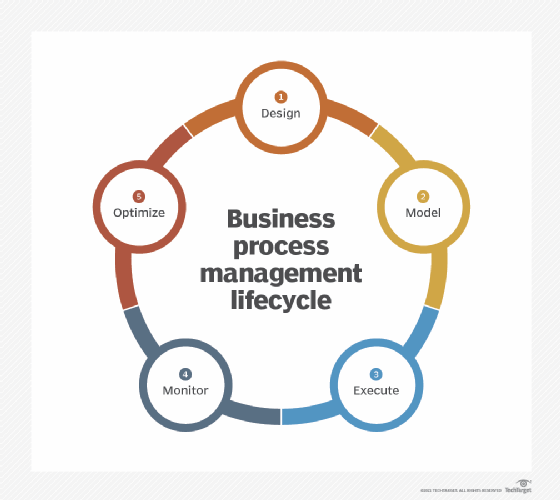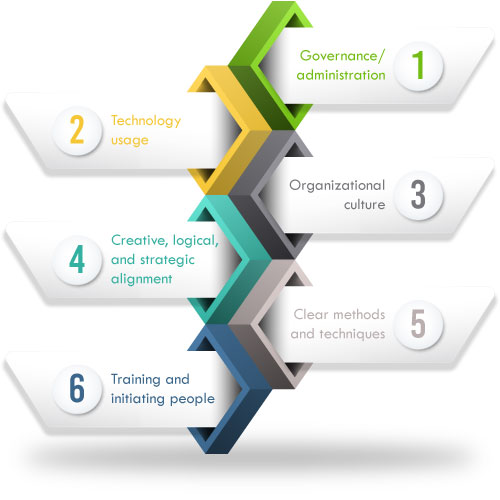You are looking for information on the topic “business process management and it”. khoaluantotnghiep.net will gather information to answer your questions in this article. Please read this article to the end to find the information you want to see. You can also check out some other related articles here: https://khoaluantotnghiep.net/wiki/ Business process Management system, Business process management, Business Process Management la gì, Business Process Management pdf, Process management, Business process management platforms, Benefits of business process, Hệ thống BPM la gì.
View information about the business process management and it
Information about this question
- Question: business process management and it
- Time: Askeded 9 hours ago
- Modified: Asked 97 minute ago
- View: 8206
business process management and it
Business Process Management (BPM) is a discipline that involves the systematic design, execution, monitoring, and optimization of business processes in an organization. BPM is aimed at improving the efficiency and effectiveness of business processes by identifying and eliminating process bottlenecks, reducing costs, improving customer satisfaction, and increasing productivity.
Information Technology (IT) plays a critical role in BPM by providing the tools and platforms necessary for process automation, data analysis, and performance monitoring. BPM software solutions provide a collaborative environment for designing, modeling, and executing business processes. These solutions can be used to create workflows, automate tasks, and integrate data from different systems to improve process efficiency.
IT can also provide real-time monitoring and analytics capabilities to identify process bottlenecks, track process performance, and provide actionable insights to optimize processes. This information can be used to continuously improve the performance of the business processes and achieve better outcomes.
Overall, IT is a critical enabler of BPM and provides the tools and capabilities necessary to achieve process optimization and improved business performance.
Watch videos related to “business process management and it”
What Is Business Process Management? | Fundamentals Of Business Process Management | BPM|Simplilearn
What is business process management in IT?
Business Process Management (BPM) in IT refers to the practice of analyzing, designing, executing, monitoring, and continuously improving business processes using technology tools and techniques.
At its core, BPM in IT aims to streamline and optimize business processes to enhance efficiency, productivity, and profitability. It involves identifying and mapping out existing processes, identifying areas for improvement, and implementing new processes and technologies to improve performance.
BPM in IT typically involves the use of software applications that automate and manage various aspects of business processes, such as workflow management, task assignment, data tracking, and reporting. These applications can be customized to fit the specific needs of an organization and can integrate with other systems and applications, such as customer relationship management (CRM) and enterprise resource planning (ERP) systems.
In summary, BPM in IT is an approach to managing business processes that leverages technology tools and techniques to drive efficiency and optimize performance.
What is business process in IT industry?
In the IT industry, a business process refers to a set of tasks or activities that are designed to achieve a specific business goal. These processes can range from simple tasks like responding to customer emails to more complex tasks like software development, testing, and deployment.
IT organizations often use various tools and techniques to manage their business processes, including business process modeling and automation software. Business process modeling involves documenting the steps involved in a business process in a standardized format, often using flowcharts or diagrams.
IT organizations may also use automation software to streamline their business processes and improve efficiency. For example, they may use workflow management software to automate the flow of tasks between different departments, or they may use robotic process automation (RPA) to automate repetitive tasks like data entry.
Overall, effective business process management is critical for IT organizations to deliver high-quality products and services, optimize their operations, and stay competitive in a rapidly evolving industry.
What is the relationship between IT and business process?
Information technology (IT) plays a critical role in supporting and improving business processes. IT can automate tasks, streamline workflows, and provide real-time data that can be used to make informed decisions, all of which are essential to efficient and effective business operations.
IT systems can be used to create and manage business processes, such as inventory management, order processing, and customer relationship management. These processes can be designed to meet specific business requirements, and IT systems can be customized to support them.
Furthermore, IT can help organizations analyze data to identify opportunities for process improvement. For example, data analytics can be used to identify bottlenecks or inefficiencies in a process, which can then be addressed to increase efficiency and reduce costs.
In summary, IT and business processes are closely linked. IT plays a vital role in supporting and improving business processes, and effective use of IT can help organizations achieve greater efficiency and productivity.
Images related to business process management and it
Found 43 business process management and it related images.


Business process Management system
Business Process Management (BPM) system is a software solution designed to improve the efficiency and effectiveness of a company’s business processes. It enables organizations to optimize their operations, reduce costs, and improve customer satisfaction by automating and streamlining their workflows.
BPM system typically includes the following components:
-
Process modeling: This component allows users to create and define their business processes using a graphical interface. They can design workflows, define rules, and specify input and output data.
-
Process automation: Once the processes are modeled, the BPM system can automate the execution of those processes by automatically routing tasks, notifications, and approvals to the appropriate stakeholders.
-
Process monitoring: The BPM system provides real-time visibility into the status of ongoing processes, allowing users to track the progress of tasks and identify bottlenecks and areas for improvement.
-
Analytics and reporting: The BPM system generates reports and provides analytics that allow users to analyze process performance, identify trends, and make data-driven decisions to improve the overall efficiency of their operations.
BPM system is used in a wide range of industries, including manufacturing, healthcare, finance, and government. It is particularly useful for organizations that have complex and interdependent processes and require a high degree of coordination and collaboration among different teams and departments.
Business process management
Business process management (BPM) is a systematic approach to identifying, designing, executing, monitoring, and improving business processes. It involves analyzing current processes, identifying areas of improvement, and implementing changes to streamline and optimize the process. BPM is focused on improving efficiency, effectiveness, and agility in business operations.
BPM typically involves the following phases:
-
Process identification: The first step in BPM is to identify the processes that need to be improved. This involves mapping out the current process, identifying pain points, and determining the desired outcome.
-
Process design: The next step is to design an improved process. This involves identifying areas where automation can be introduced, streamlining the process, and designing a new process flow.
-
Process execution: Once the new process has been designed, it needs to be executed. This involves implementing the changes, training employees on the new process, and ensuring that the process is being followed correctly.
-
Process monitoring: To ensure that the process is working correctly, it needs to be monitored. This involves measuring key performance indicators (KPIs) to determine whether the process is achieving its desired outcome.
-
Process improvement: Based on the results of the monitoring phase, changes can be made to further optimize the process. This involves identifying areas where the process can be further streamlined and introducing additional automation where necessary.
Overall, BPM is a continuous improvement process that involves identifying, analyzing, and improving business processes to optimize organizational efficiency and effectiveness.
You can see some more information related to business process management and it here
- What is Business Process Management? An In-Depth BPM …
- Definition of Business Process Management (BPM) – Gartner
- Business Process Definition – Appian
- The Relationship Between IT And Business Processes – LinkedIn
- What is bpm technology? | HCLTech
- BPM (Business Process Management) là gì? – Viblo
- What is Business Process Management? – IBM
- Business process management – Wikipedia
- What is business process management? – Red Hat
- Business Process Management (BPM) – Kissflow
- BPM Business Process Management là gì và vai trò – VuiApp
- What is BPM? A Guide to Business Process Management (2022)
- What’s BPM? Business Process Management explained simply
Comments
There are a total of 811 comments on this question.
- 240 comments are great
- 936 great comments
- 245 normal comments
- 6 bad comments
- 82 very bad comments
So you have finished reading the article on the topic business process management and it. If you found this article useful, please share it with others. Thank you very much.